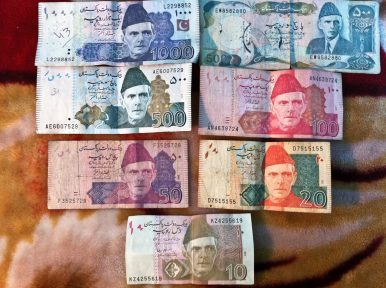By Shezad Lakhani
Prime Minister Imran Khan’s recent visit to Washington included a meeting with the International Monetary Fund (IMF), after the IMF Board formally approved a three-year $6 billion bailout program for Pakistan in mid-July. It was the country’s 13th loan in little more than 30 years. While repeated IMF conditional loans highlight inept economic management across successive governments in Islamabad, they also demonstrate how the IMF has largely failed at encouraging lasting reforms in Pakistan. The current program appears to once again be destined for failure.
The structural conditionalities the IMF sets out in the new loan agreement look eerily similar to the conditions set out when Pakistan’s last program began in 2013. The inclusion of the same policies less than three years after the “successful” completion of the previous program, underlines how little lasting impact the previous program had.
The new IMF program sets out a benchmark to audit the finances of Pakistan International Airlines (PIA) and Pakistan Steel Mills, and gives the government more than a year to “triage” state-owned enterprises (SOEs) to determine which to privatize, liquidate, or maintain under state control. These points are included despite the fact that privatizing PIA and developing a reform plan for 30 SOEs were conditions in the previous program. While the IMF noted in October 2016 that significant preparatory work on SOEs had been conducted, rather than moving forward with the work already conducted the IMF is allowing the government to restart the process.
The new program also gives the government three months to prepare a comprehensive plan to address the financial losses in the electricity sector, generally referred to as “circular debt.” The government is being given additional time to come up with a plan, even though circular debt is an issue that has plagued every government in power since at least 2008, and was a core element of Pakistan’s last program.
The IMF has to include similar structural reforms in its new program because its approach results in governments in Islamabad taking steps that temporarily improve financial conditions. However, these measures are easily reversed once the loan program in concluded. The Fund continues to allow Pakistan to study, plan, and prepare for structural reforms, but as each loan program progresses, the immediate economic crisis dissipates, and political will wanes. In the end, the prepared policies are not implemented, leading to episodic rather than sustained economic improvements.
For instance, Pakistan had to implement policies to increase tax revenues in its announced budget and reduce electricity subsidies before the Board approved the loan agreement. Pakistan implemented similar policies before and during its previous program, but after the program ended and elections approached, it quickly reversed course by substantially increasing spending. This led to the crisis that the current government inherited.
While pushing for periodic electricity price increases, the previous two IMF programs were not able to remove political interference in setting of prices in the sector, which drives the over a decade-long circular debt problem. Similarly, while each program had benchmarks involving privatization, Pakistan has not privatized any major SOEs since the mid-2000s.
The previous conditional loan, like the current one, set out to improve the independence of the central bank, the State Bank of Pakistan (SBP). But while the previous government increased independence on paper, once the program ended then-Finance Minister Ishaq Dar still pressured the SBP to maintain a strong rupee, leading to a rapid loss of precious foreign exchange reserves.
The IMF’s tedious approach of advocating for reforms occurs as economic problems in Pakistan continue to get more serious. Pakistan’s general government debt increased from an already high level of 66.7 percent of GDP before its last program to 74.9 percent of GDP last year. Cumulative losses of SOEs have climbed from 3.5 percent of GDP to about 4.5 percent of GDP.
Most importantly, repeated economic crises and the failure to address core economic constraints has led to growth remaining far below potential, which is especially concerning since Pakistan has a large and growing working age population that lacks sufficient economic opportunities.
The frequency of IMF programs for Pakistan is the most telling sign of their failures. Unless the IMF changes strategies during the current bailout, it is likely that Pakistan will need a 14th program in the next several years.
Since the IMF has been constantly engaged with Pakistan, the lender would do well if programs were built on work done during the previous loan agreement rather than starting from scratch each time. While governments in Pakistan change, the fundamental work done to prepare for structural reforms can be used across programs.
The Fund could also potentially have more success by pushing for structural reforms, such as privatization or changes in governance, early in the program, when Islamabad is more desperate for IMF support, rather than settling for important but easily reversible steps.
Shezad Lakhani is a former economic analyst with the U.S. government whose career focused on South Asia. He is located in Santa Clara, CA. Follow him on Twitter @Shezadl1. The views expressed in this article are the author’s alone and do not reflect those of his employer.

No comments:
Post a Comment